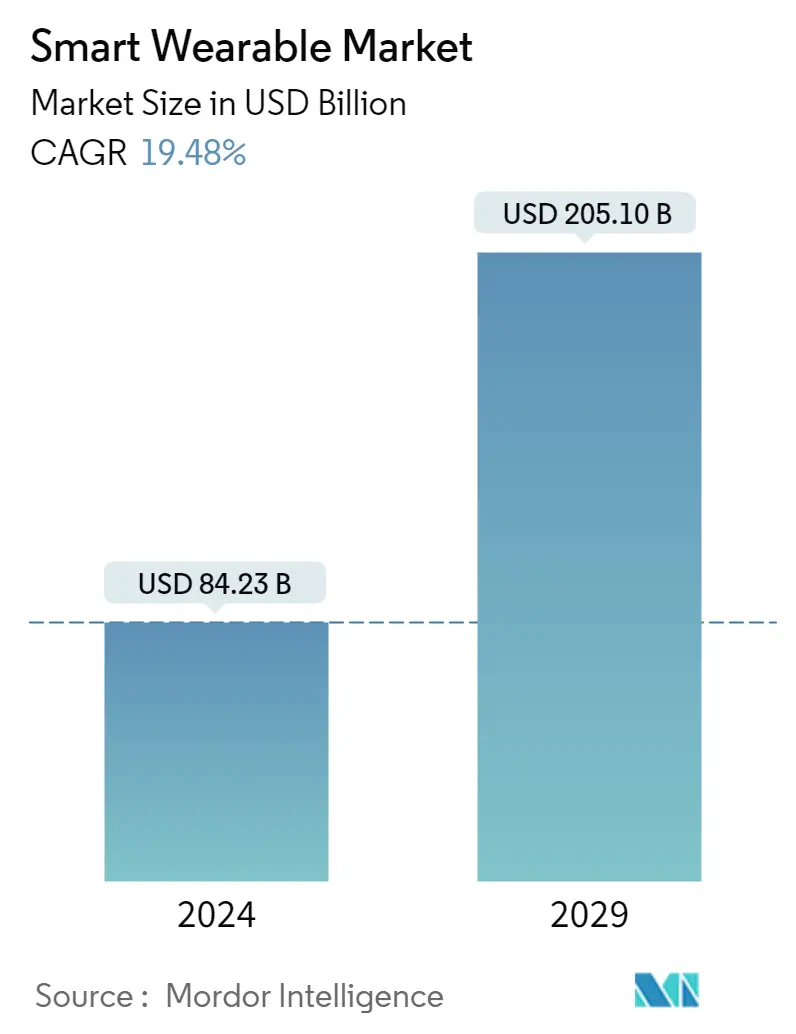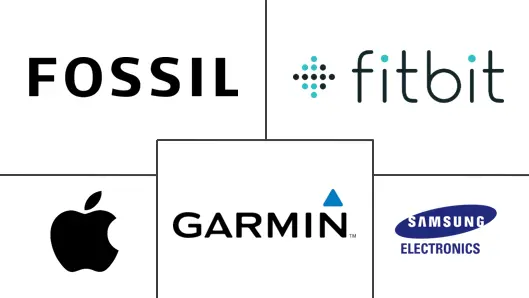Market Size of Smart Wearable Industry

| Study Period | 2021 - 2029 |
| Market Size (2024) | USD 84.23 Billion |
| Market Size (2029) | USD 205.10 Billion |
| CAGR (2024 - 2029) | 19.48 % |
| Fastest Growing Market | Asia Pacific |
| Largest Market | North America |
Major Players
*Disclaimer: Major Players sorted in no particular order |
Need a report that reflects how COVID-19 has impacted this market and its growth?
Smart Wearables Market Analysis
The Smart Wearable Market size is estimated at USD 84.23 billion in 2024, and is expected to reach USD 205.10 billion by 2029, growing at a CAGR of 19.48% during the forecast period (2024-2029).
Research advancements have led to increased innovation in recent years and are instrumental in driving the demand for the wearable market. It also led to new product categories like smart fabrics and hearables, which incorporate high-end technology and design in daily living. Lately, the focus is to provide an aesthetic design to devices to attract customers.
- Wearable technology, an emerging trend, integrates electronics into daily activities and addresses the changing lifestyles with the ability to wear on any body part. Factors such as the ability to connect to the internet and data exchange options between a network and a device are leading to the wearable technology trend.
- Wearables have gained significant traction owing to the boom in the fitness trend across consumers. According to Cisco Systems, connected wearable devices are expected to increase from 593 million in 2018 to 1,105 million this year. The smartwatch category is experiencing a rise, owing to additional features, like the brand that suits the everyday lifestyle. Strong brands, such as Apple and Fossil, are keeping the pricing consistent with the price bands of traditional watches to maintain their revenues. With Google's WearOS, many other premium watchmakers, such as TAG and Armani, have entered the segment.
- The rising penetration rates of urbanization in various parts of the world have driven the demand for advanced, aesthetically appealing products to better serve consumers' requirements, such as multiple features in one device and time schedules. Moreover, the vast millennial population across the globe was quick to adopt smartwatches, owing to the increased spending ability on their regular work hours tracking and luxury standards.
- Hearables are gaining traction with the increasing acceptance of smart assistants. Companies like Bragi, Google, Apple, Jabra, Samsung, and Sony have been actively contributing to the growth of this segment.
- The COVID-19 outbreak and the lockdown restrictions across the world have affected industrial activities around the globe. The electronics industry is hit severely with a significant influence on its supply chain and production facilities. Production reached a standstill in China and Taiwan during February and March, influencing various OEMs worldwide.
